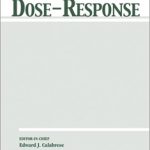Salvatore Chirumbolo, Geir Bjørklund
Homeopathic Dilutions, Hahnemann Principles, and the Solvent Issue: Must We Address Ethanol as a “Homeopathic” or a “Chemical” Issue?
Homeopathy, 2018, 107 (1), 40-44

Introduction Homeopathic remedies usually contain a significant amount of ethanol as a co-solvent with water, a pharmaceutical formulation that may raise some concern when remedies are tested in vitro or in laboratory animals, due to the assessed toxicity of ethanol on cell cultures and organisms. The amount of alcohol in a homeopathic remedy is adjusted following the different homeopathic pharmacopoeias but it is rarely below 30% v/v, which is a molar mass established to meet both Hahnemann’s traditional heritage and the hypothetical role of ethanol in “imprinting” water, through the formation of nanobubbles, with the homeopathic activity of the remedy. Aims This article aims at discussing the role of ethanol in homeopathic dilutions and how its chemical nature should affect the experimental approach in homeopathy. Issues Under Debate While the content of ethanol in a homeopathic remedy should be as low as 20% v/v, which is a molar fraction able to catalyze the formation of nanobubbles in a dynamized alcohol–water dilution, this amount raises concern about ethanol toxicology in the experimental research with laboratory animals or in vitro. Several authors diluted 1:100 ethanol 30% v/v from their tested homeopathic dilutions with distilled water to prevent the cytotoxic effect of the alcohol, but in doing so, they probably reduced the ability of ethanol (now 0.3% v/v) to induce the formation of nanobubbles, thus probably affecting the homeopathic property of the same dilution. This may generate concerns about how to manage an experimental setting, to meet both the “chemical” nature of ethanol and its role in “homeopathy,” an issue that is discussed in the article. Conclusion Any author working with homeopathic dilutions containing a molar fraction of ethanol higher than 20% should take into account the fact that ethanol is cytotoxic and may be a catalyst to the formation of nanobubbles, and so should adjust the experimental approach accordingly.








Lascia un commento
Devi essere connesso per inviare un commento.